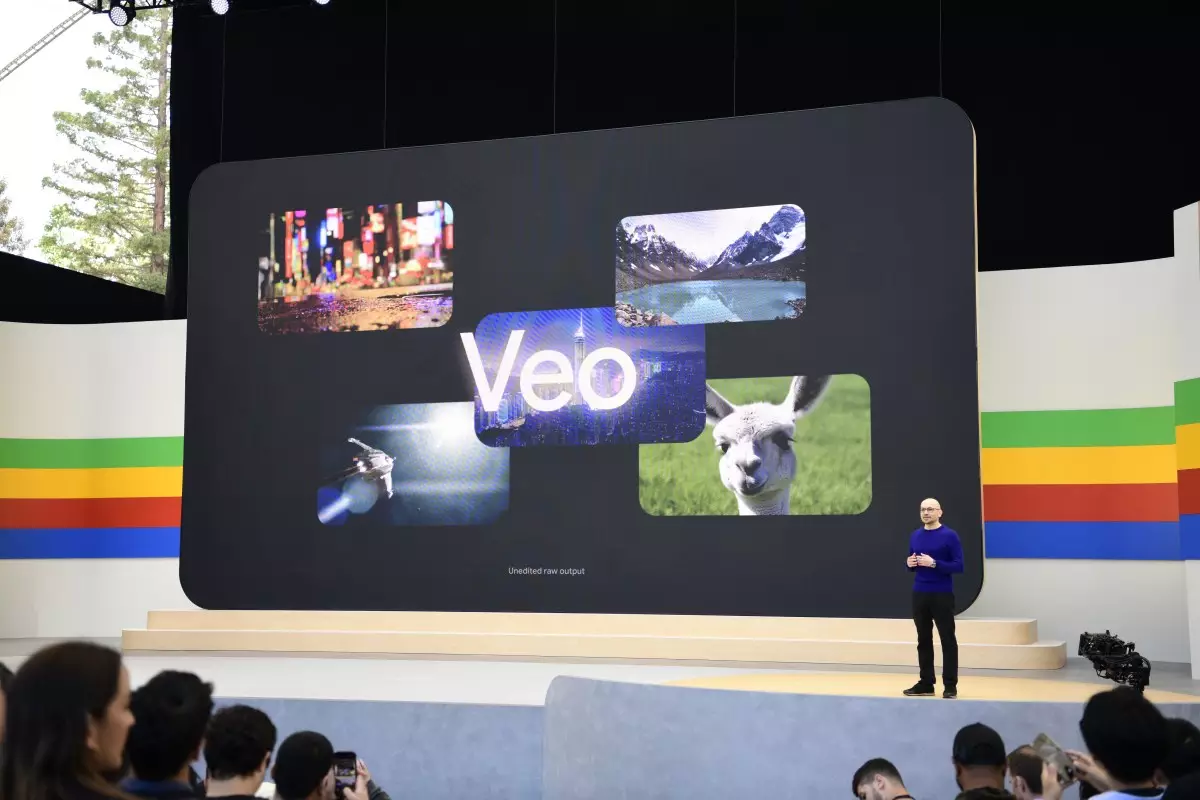At the heart of technological evolution lies an incessant desire to push boundaries—an ambition that Google’s DeepMind and its visionary CEO, Demis Hassabis, exemplify with their latest hints at integrating advanced AI models into the realm of video games. While these declarations are initially playful, they unveil a profound future where artificial intelligence doesn’t merely generate content but actively shapes immersive, dynamic worlds. The potential shift from passive content creation to active, real-time interactive environments could redefine how we experience digital entertainment, blending the boundaries between scripted narratives and living, breathing virtual universes.
Google’s experimentation with Veo 3 and the aspirations for a “world model” suggest an ecosystem where AI simulations could lead to truly playable environments. Unlike traditional video-generation models that produce static or pre-rendered clips, world models aim to emulate the very fabric of reality—predicting how virtual entities and terrains respond to user inputs and environmental changes. This paradigm shift could make AI not just a tool to generate content but a co-creator that dynamically reacts and evolves with players, elevating the gaming experience from passive consumption to active participation.
The Power of World Models Over Conventional AI
To understand the significance, it’s essential to distinguish between video-generation models and world models. The former focuses on creating realistic sequences of visuals and audio—think movie trailers or cinematic cutscenes—while the latter seeks to simulate the physics, behaviors, and interactions within an environment. World models serve as the cognitive backbone of intelligent agents, allowing them to anticipate future states and plan actions accordingly—a cornerstone for developing truly autonomous, adaptive characters and environments in games.
Google’s ambitions to develop a multimodal foundation, like Gemini 2.5 Pro, into a perceptive simulation of human cognition indicates a broader vision: machines that don’t just mimic reality but understand and predict it. Such capabilities could lead to immersive worlds that evolve seamlessly based on player decisions, opening doors to emergent narratives where stories unfold uniquely for each individual—a stark contrast to the fixed narratives of traditional gaming.
Challenges and Opportunities in Creating Playable Virtual Worlds
Despite the promising outlook, the journey to playable, real-time AI-driven worlds is riddled with technical hurdles. Currently, models like Veo 3, which can generate synchronized video, sound, and physics-based motion, remain passive, acting as tools rather than autonomous agents. The next critical step involves transforming these generative frameworks into active simulators capable of real-time interaction, decision-making, and adaptation—traits vital for seamless, engaging gameplay.
Achieving this would require AI to handle complexities such as maintaining consistency during prolonged interactions, managing unpredictability, and providing players with a controllable yet organic experience. Here lies the subtle but crucial gap; current models excel at creating convincing snippets but lack the persistent, coherent world-building necessary for full-fledged games. Google’s hybrid approach, combining Veo’s visual and auditory generation with Genie’s emerging world-model capabilities, could potentially fill this void, paving the way for environments that feel alive and responsive.
Competitive Landscape and Future Prospects
While Google explores these frontiers, other industry players recognize the transformative potential as well. Companies like Microsoft, Scenario, Runway, and Pika are investing heavily in similar technologies, hinting at a future where AI-driven game design becomes the norm. Notably, OpenAI’s venture into video synthesis with Sora indicates a broad industry shift toward AI that can generate, manipulate, and simulate complex worlds in real time.
The true question is whether Google, with its vast resources and deep expertise in AI research, can leap ahead and redefine interactive entertainment. Their venture into making Veo and Genie into playable, predictive world models would not only revolutionize gaming but could also influence related fields such as simulation training, virtual collaboration, and digital storytelling. If executed thoughtfully, this hybrid approach could be the cornerstone of a new era—one where players don’t just play games but inhabit living, intelligent worlds shaped by AI.
Through an audacious blend of research, innovation, and strategic vision, Google stands at the cusp of transforming how humans engage with digital environments. The potential to create game worlds that adapt, learn, and evolve alongside players could redefine entertainment fundamentals, making AI not just a tool but an active participant in shaping our virtual realities.

